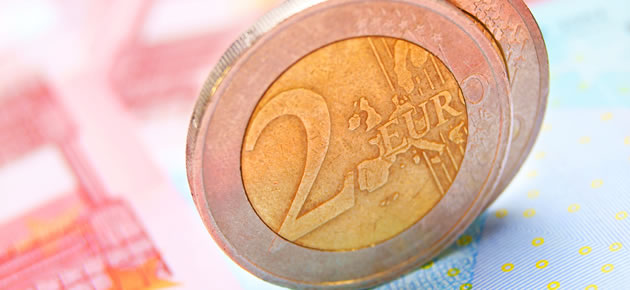The Australian Dollar edged slightly lower against the US Dollar over the four-day weekend but began trading on Tuesday in a stronger position against the Euro.
While the Australian Dollar came under pressure last week following the publication of minutes from the latest Reserve Bank of Australia policy meeting, the expectation of a rate increase occurring in the near future lent the asset underlying support.
A domestic report published during the local session also showed that Australia’s conference board leading index advanced by 0.3 per cent in February following a 0.2 per cent gain the previous month.
The Euro to AUD exchange rate suffered further as Credit Suisse strategists positively revised their 12-month Australian Dollar forecasts.
The industry experts now expect the ‘Aussie’ to be commanding 91 US cents over the next three months and 82 US cents over the next twelve months. Previously they had foreseen the currency trading in the region of 85 US cents over the quarter and 75 US cents over the year.
In the view of the Credit Suisse officials; ‘We underestimated the extent and persistence of [Aussie] strength, as the RBA has proven less averse to [the currency’s] strength than we expected, Australian data has surprised to the upside, and the Chinese government has announced near-term stimulus aimed at supporting China’s growth.’
Although the Euro could recoup some of its losses against the Australian Dollar over the next few hours as construction output and consumer confidence reports for the Eurozone are published, the ‘Aussie’ may turn bullish during Australasian trading.
Widespread Australian Dollar gains could occur if Australia’s consumer price index shows that inflation came in above the RBA’s target band – adding to the case for raising interest rates.
Consumer prices are expected to have increased by 0.8 per cent in the first quarter, quarter-on-quarter, and be up 3.2 per cent on the year.
Annual CPI came in at 2.7 per cent in the fourth quarter of last year.
China’s HSBC Manufacturing PMI for April will also have an impact on the Australian Dollar’s performance.
The measure of manufacturing is expected to come in at 48.3 this month, below the 50 line separating growth from contraction but still an improvement on the 48.0 reading recorded in March.
As China is Australia’s main trading partner, the economic slowdown in the Asian nation has been a concern and a better-than-forecast manufacturing result would be warmly welcomed.
Of course, Markit services and manufacturing PMI for the Eurozone, Germany and France may also have a notable impact on the Euro to Australian Dollar pairing tomorrow.
Euro (EUR) Exchange Rates
[table width=”100%” colwidth=”50|50|50|50|50″ colalign=”left|left|left|left|left”]
Currency, ,Currency,Rate ,
Euro, ,US Dollar,1.3807,
,US Dollar,1.3807,
Euro, ,British Pound,0.8215,
,British Pound,0.8215,
Euro, ,Australian Dollar,1.4758,
,Australian Dollar,1.4758,
Euro, ,New Zealand Dollar,1.6092,
,New Zealand Dollar,1.6092,
Euro, ,Canadian Dollar,1.5214,
,Canadian Dollar,1.5214,
[/table]



